
On the first day, we slogged through mud, and more mud, as we pulled ourselves up and up the trail. All day. Over rocks, around thick vegetation and through calf-deep wallows of muck. I knew it would be like this. But ofcourse, when I’m in the middle of the upward haul, I invariably ask myself, “Why did I think this would be fun?”
Because it is.
Hiking is who I am, and before I left Colombia, I just had to get into the backcountry and see more of this beautiful place. A three day, two night trek across a beloved national park seemed like a good place to start.

Los Nevados National Park is located to the east of Colombia’s coffee-growing region. It was established in 1974 and protects 225 sq. miles (583 sq km) of forests, wetlands, páramo (high-altitude grasslands) and three quickly melting “tropical glaciers” still in existence on the snow-capped volcanos of Nevado del Ruiz, Nevado de Santa Isabel and Nevado del Tolima. The rivers that shed from this park supply water for over 2,000,000 inhabitants, including the vast majority of fincas or farms in the coffee region. I had been longing to see this very important ecosystem for several months. It’s a good thing I found the wonderful guides at Paramo Trek in Salento, Colombia to help me get there. After renting some boots and warm clothing, and stashing the rest of my belongings at their office, I was ready to go!
We started in the rain, outside of Salento at about 6,500 feet. It was really raining, but I had been matched with a group of international travelers who were young and cheerful so I knew our time together would be great. We climbed and climbed and it quickly became apparent, that even though I’m young at heart, I do hike more slowly than most (uphill, through the mud, and at higher elevations!) Also, my legs are short! So, by the middle of Day One, they were far ahead and one of the guides fell back to stay with me. I could tell that he was getting concerned that we weren’t going to make it to our destination by dark. And then he was getting concerned if I was going to make it across the park for all three days of the trek. I knew I’d make it. I didn’t have any hesitation on that. I just needed to take a lot of breaks to breathe.
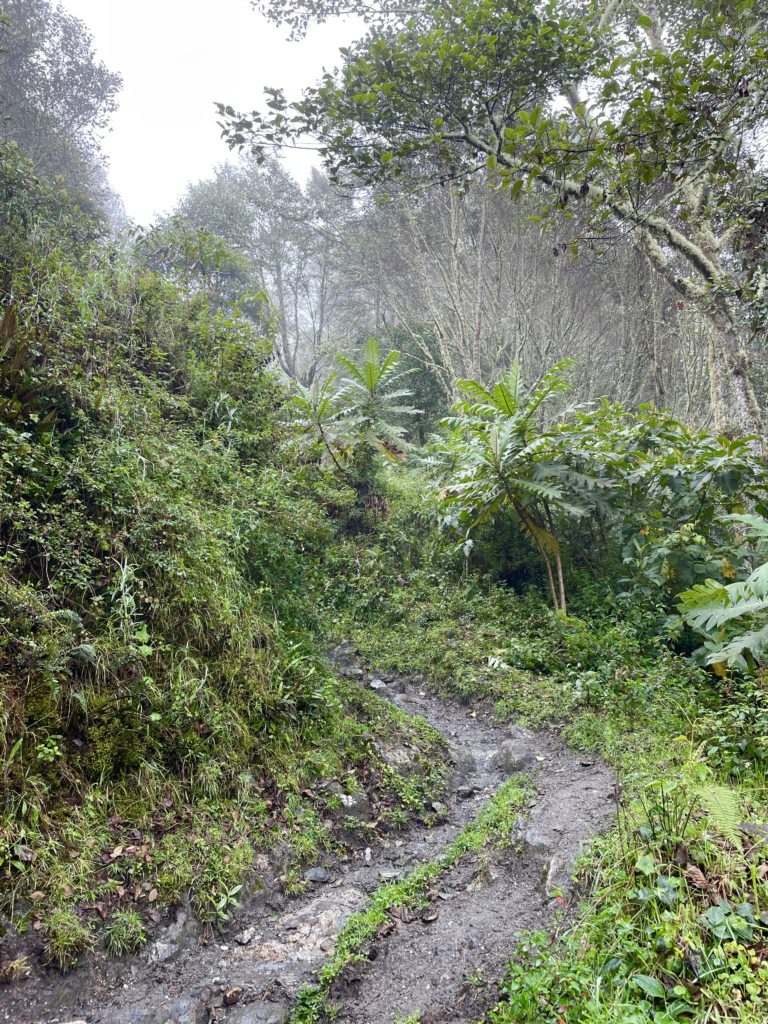



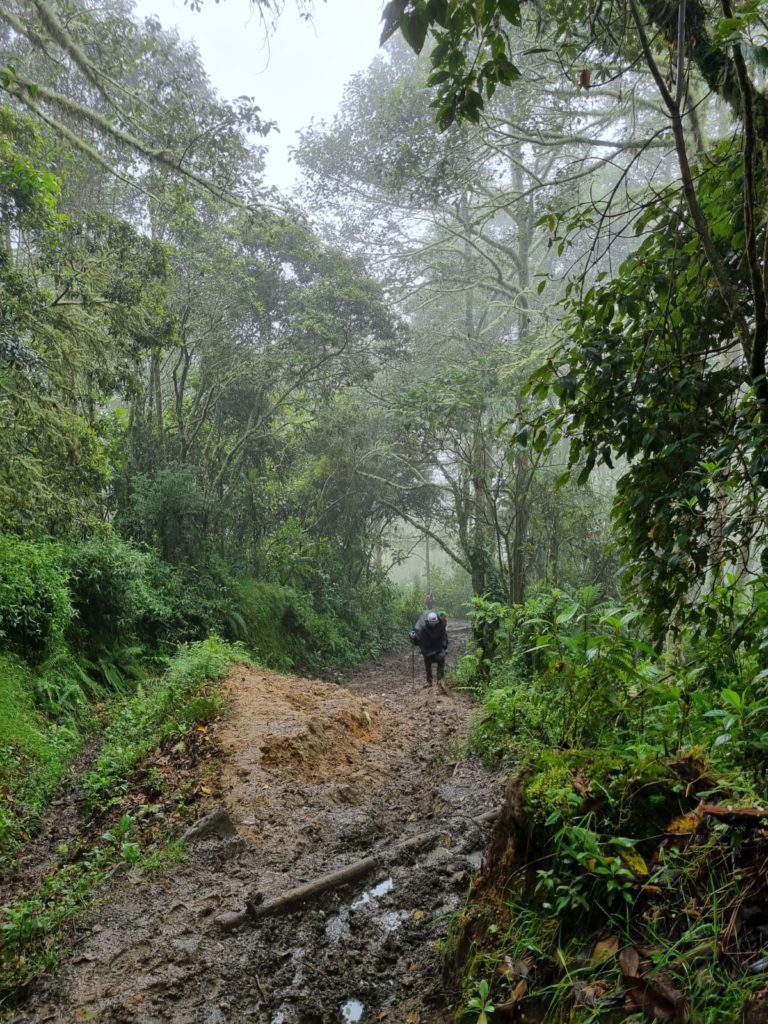
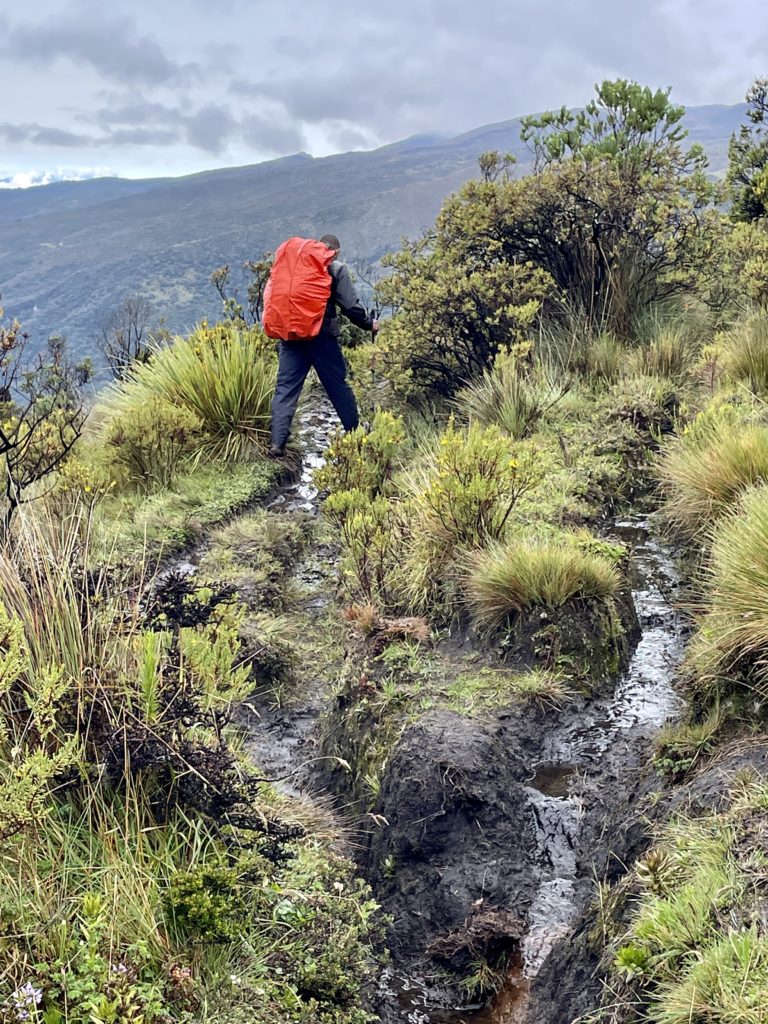

We climbed and climbed. I was missing my normal backpacking backpack with little zippered pockets filled with nuts, chocolate and dried fruits. I needed incentives. There were no views, just fog and mud in an endless uphill trough made worse by an occasional pack-team of mules passing by. I felt sorry for them too, but they are used to this weekly trip down into town for supplies. There’s a lot of people that live up in these mountains.
When Romel, our guide, finally told me we had arrived to our accommodations for the night, I couldn’t even see the guest house. The fog was so thick. But the family welcomed us with steaming mugs of “aqua con panela” (sugar water), bowls of potato soup and plenty of wool blankets for our bunkbeds.

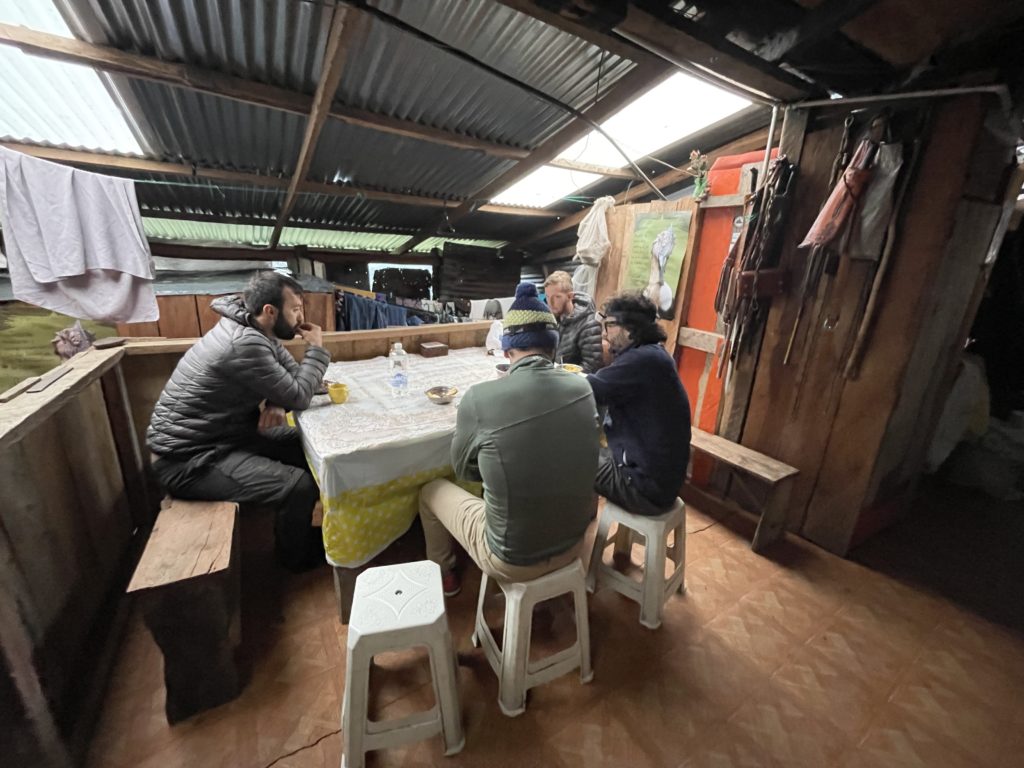

Here’s a video tour of our first night accommodations (Finca Argentina) shot by fellow hiker Federico.
From experience, I knew that I was going to suffer a strong headache from a mixture of dehydration and ascending in altitude too quickly. So once I warmed up and drank a lot of electrolyte powder in water, I went straight to my bunk to sleep it off. I’m glad I did!
In the morning, my head was clear and the sky showed some promise of sunshine, so I felt much better about what was to come.


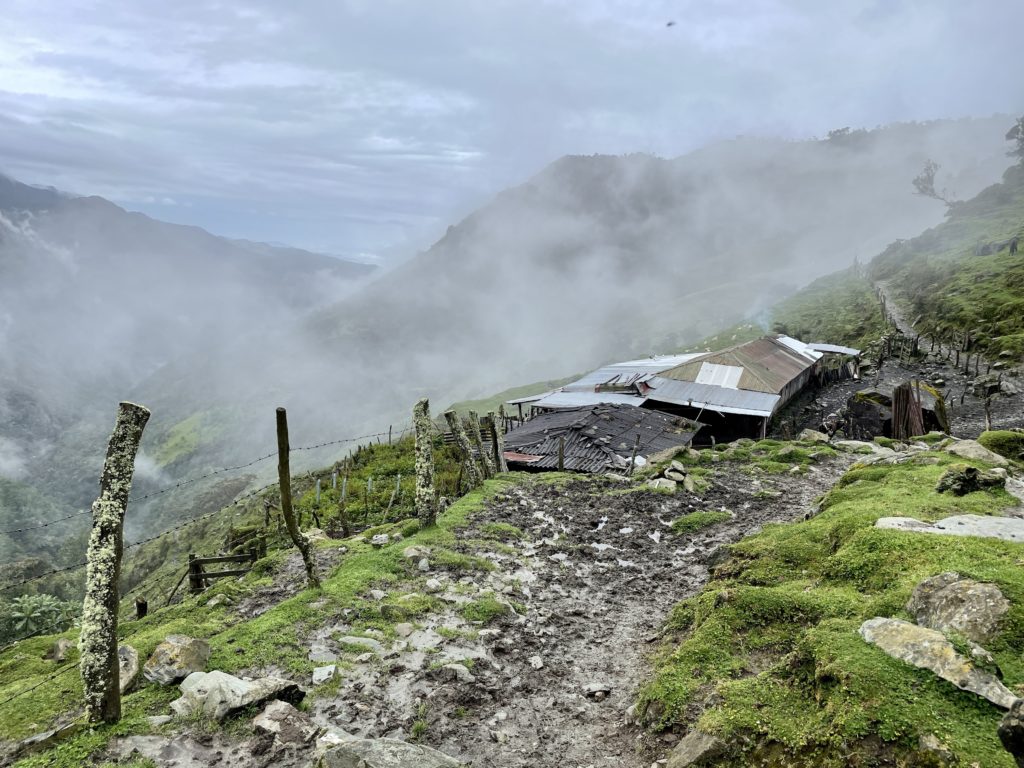


After saying goodbye to the sprawling mountain farmhouse, up we climbed, with views rewarding each step. Soon, we reached the páramo and a literal forest of frailejones set the scene for the day.

On many occasions, I’ve hiked in the páramo ecosystem in Ecuador, so I was anxious to compare it to the páramo of the Colombian Andes. Basically, the páramo is the high-altitude grassy zone in between timberline and the region of permanent snow. But because it only exists in the humid, tropical-equatorial regions of the world, it has very special characteristics. According to the Wikipedia write-up of Los Nevados National Park, “The páramo is composed of grassland, peat bog, scrubland, swamps and lagoons and occupies 80% of the park’s area.”
The most prominent plant in this paramo landscape is the frailejone (pronounced “fry-lay-hone”). It only grows here in the high elevation páramo and is the tallest member of the sunflower family. Frailejones are incredibly important because the plants’ hairy leaves and thick spongy trunks trap water vapor from the air, then release it through its roots. It is believed that about 85% of the fresh water in Colombia is processed by plants like the frailejon as they generate water for wetlands, lakes, rivers and streams – which is the drinking water for millions of communities all over the Andes Mountains. Frailejones are also essential for adding biomass to the soil, minimizing erosion and supporting the survival of several other species.




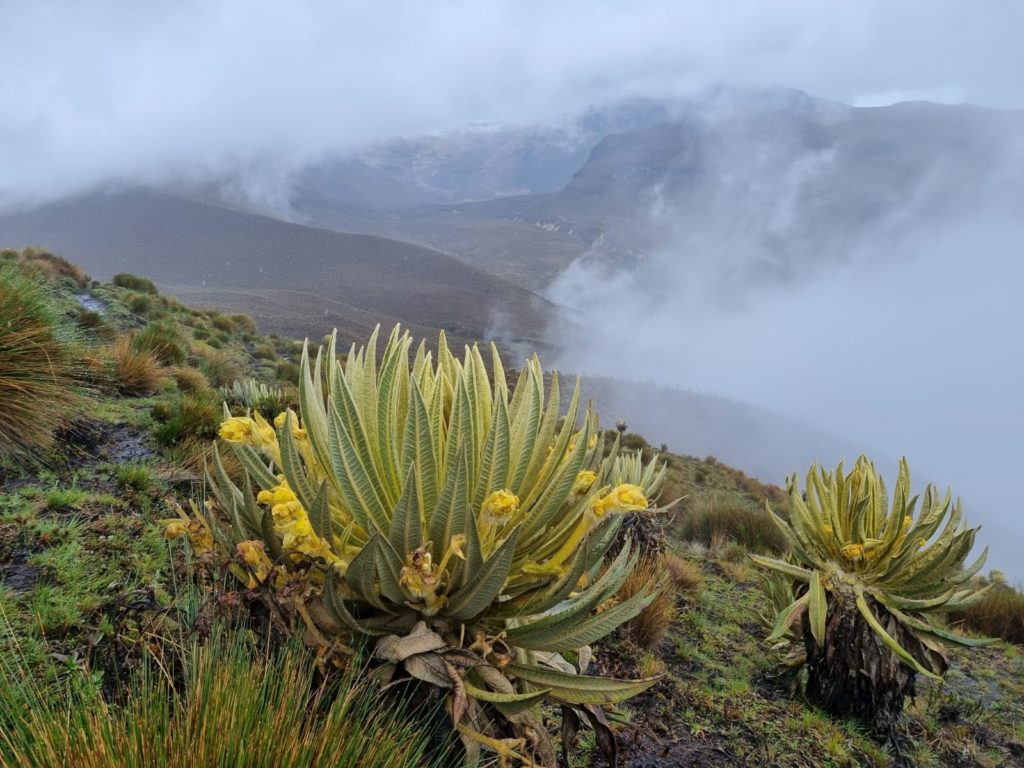
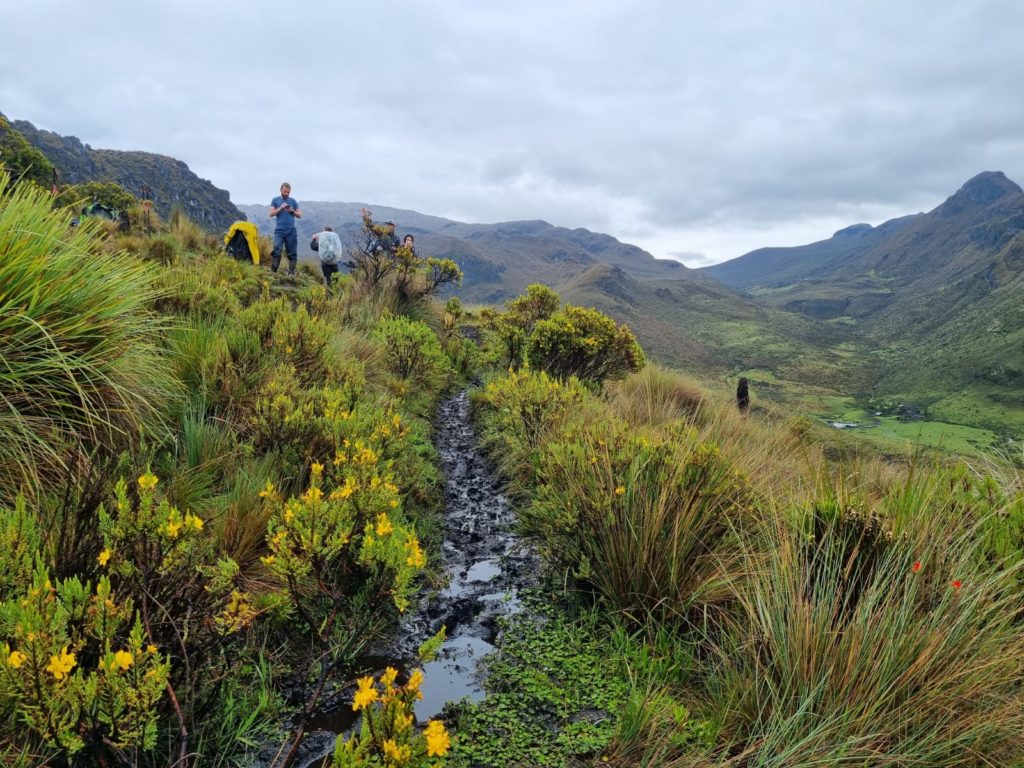
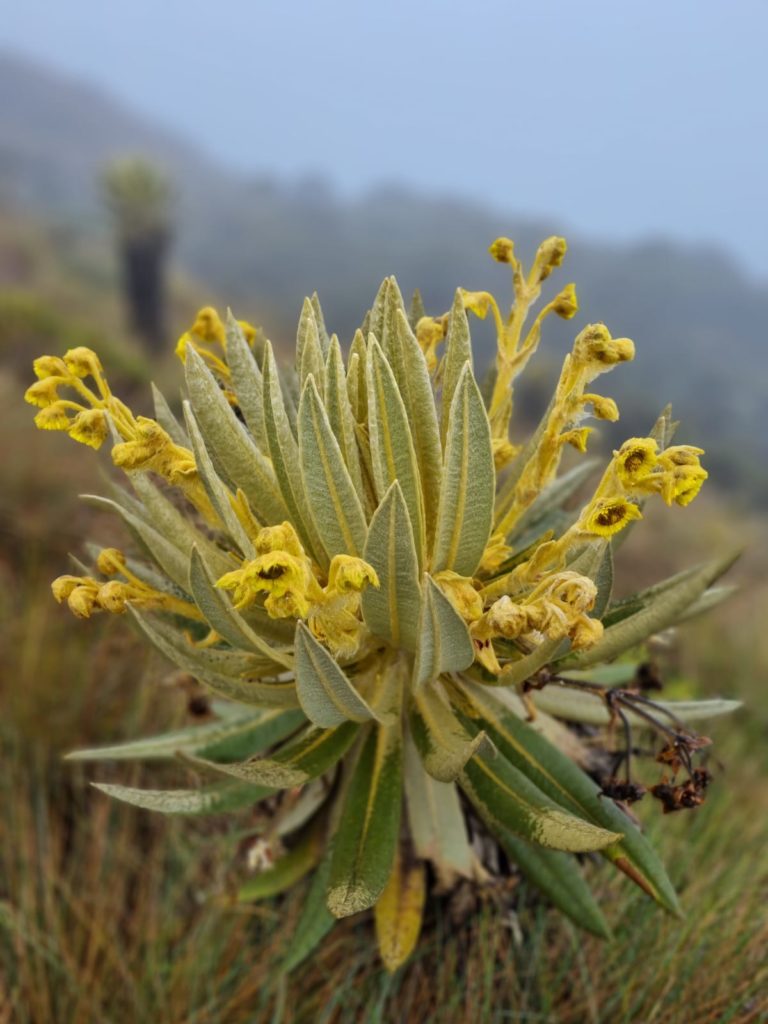
I was told that frailejones can live for a few hundred years. Their fuzzy white hairs protect their leaves from the intense high-altitude sun and their dead leaves fold down to keep their stem warm during the cold and windy nights.
Walking through the mist among the statues of frailejones with the towering mountains and valleys all around was a very special experience indeed. This is why I hike up… to get to see places like this.

When we reached our highest elevation for the trip, our guide, Romel, gave us all a chocolate prize. “4,200 metros sobre el nivel del mar” is equal to 13,779 feet above sea level. This isn’t the highest I’ve hiked by far, but nevertheless, it felt wonderful to have climbed up into this beautiful ecosystem!
By mid-afternoon, we reached our second guest house. It was located in a very muddy valley, but much nicer with ample space for us all to warm ourselves in the kitchen.






Here’s a video tour of our second night accommodations (Finca Berlin) shot by fellow hiker Federico. You’ll see me at the end of this video.
The morning of Day Three gave us some clear views of the surrounding snowy mountains, deep valleys and lakes. We covered a lot of miles on this day, but our up-and-down hike included many beautiful vistas, different types of flowers, and a forest of polylepis or paper trees, known for their paper thin layers of peeling bark.

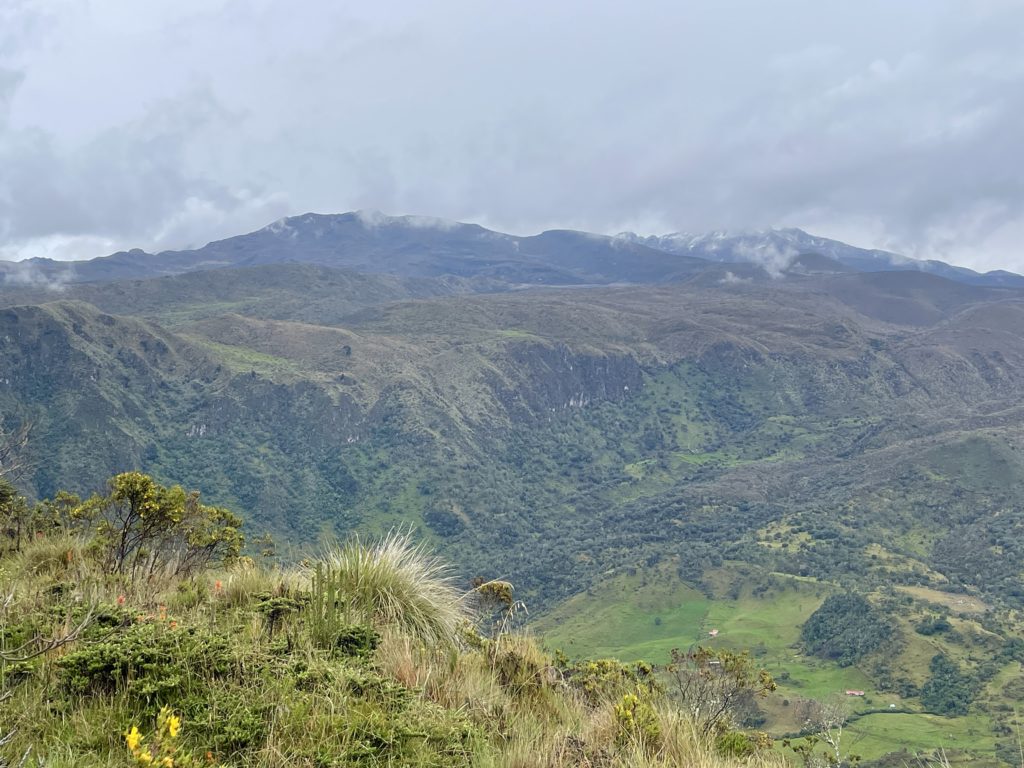


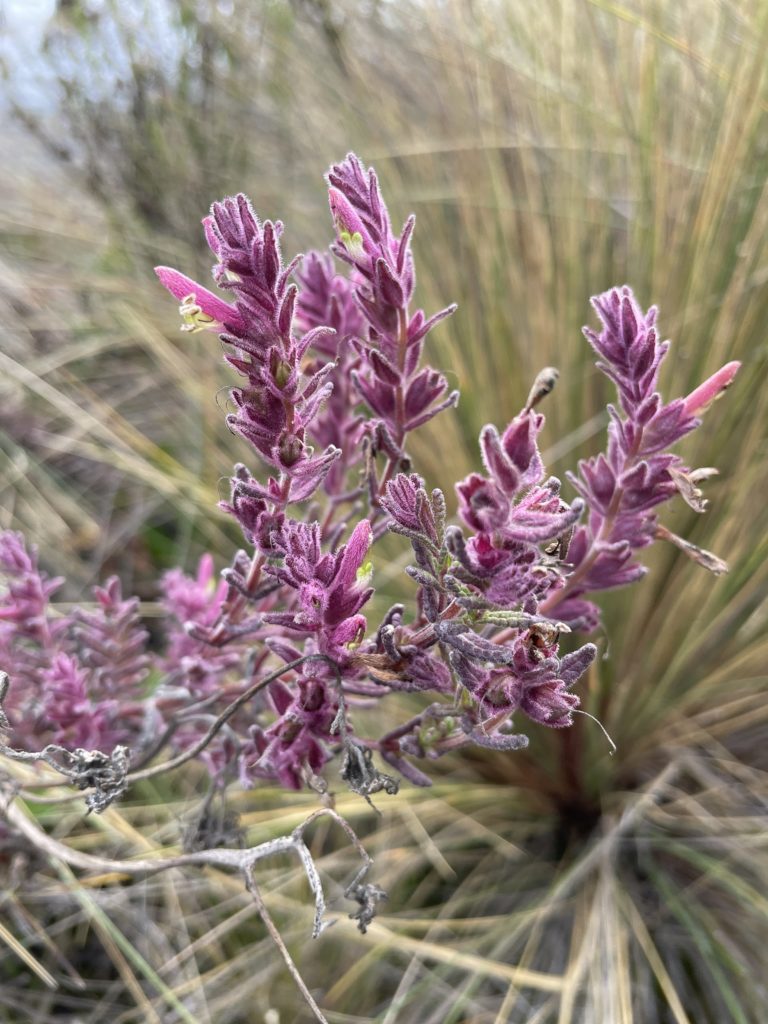




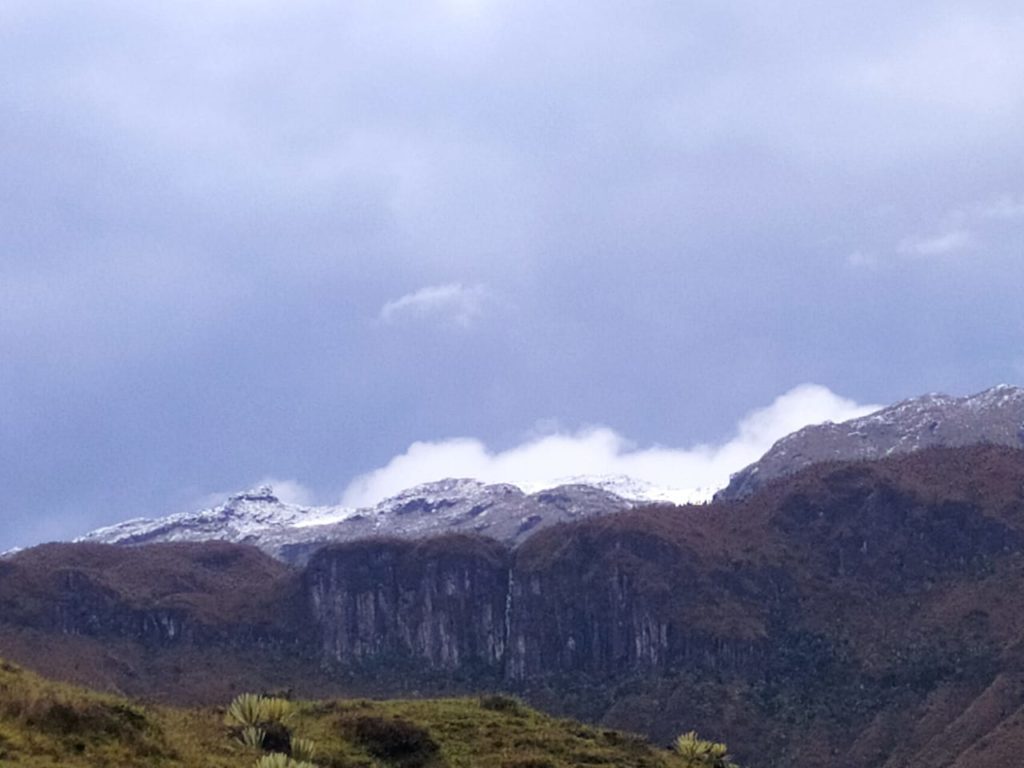


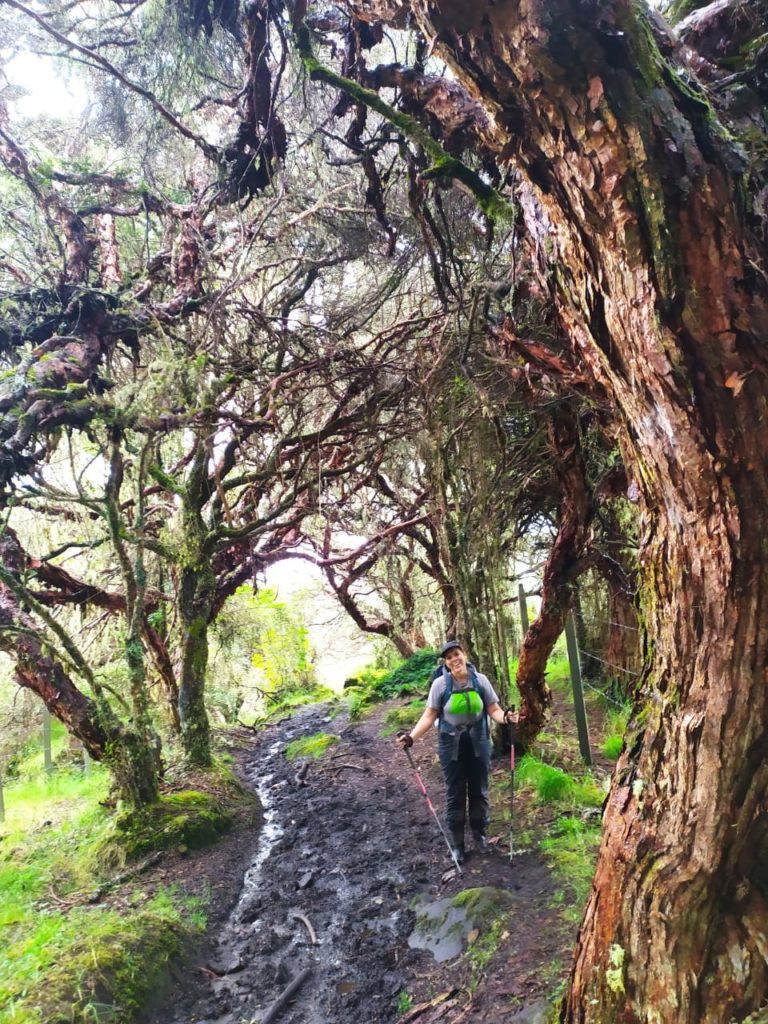
By the end of the day we came down out of the reserve and found a jeep waiting to transport us three hours back to civilization. Along the way, we stopped for a great fish dinner to celebrate our accomplishment together: three days, 24.8 miles (40 km) and over 7,000 feet elevation gained. I feel so lucky to have gotten to experience this part of Colombia.


Thank you to Paramo Trek for a great trip!

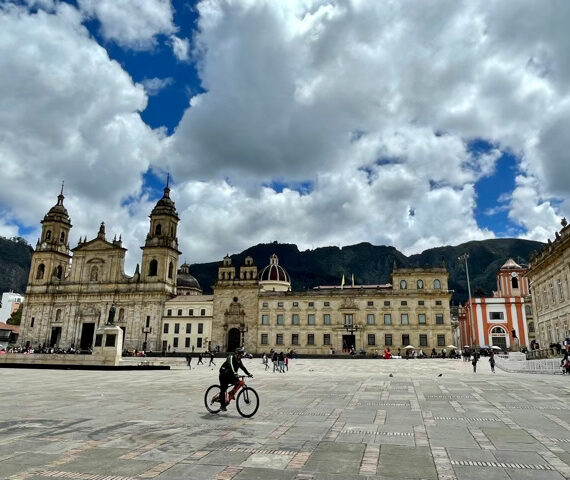
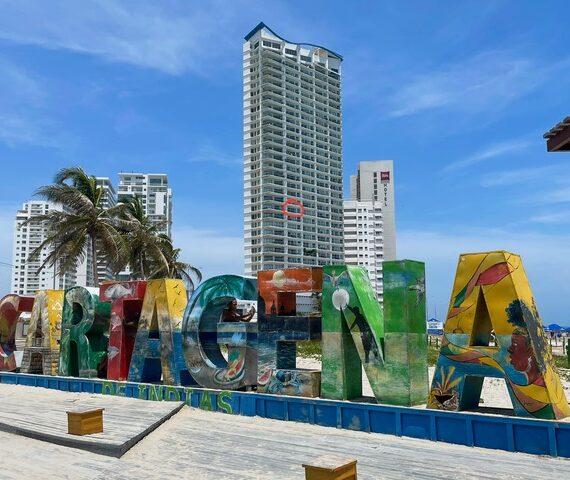
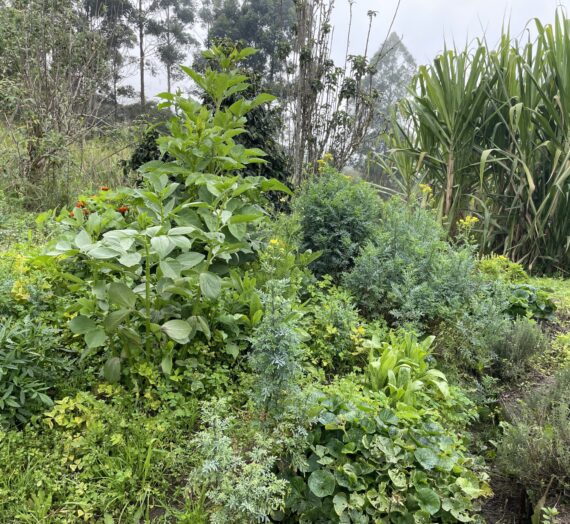
Tracey
Wow Becky! What a wonderful accomplishment. You are so inspiring!